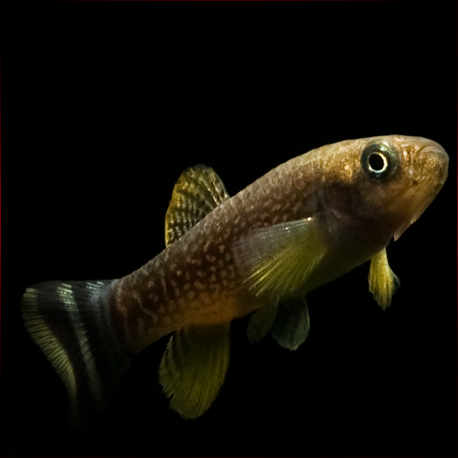More info
Datasheet
| Minimum Tank Size | 60 litres / 15.85 US gallons |
| Maximum Size | 8.0cm / 3.15inches |
| Temperature | 15°C / 59.00°F - 30°C / 86.00°F |
| Hardness | 15.02dgH / 268ppm - 35.02dgH / 625ppm |
| pH | 7.5-9.0 |
General Description
Known scientifically as Aphanius Dispar, it is important to note that this species is considered nominal due to its paraphyletic grouping status in the Aphanius genus. Although not widely available in aquatic stores, it can be sourced from specialist breeders or associations. These fish, while not as vibrant in coloration, offer captivating behavior patterns and continuous activity, making them intriguing subjects for dedicated aquarists. The genus Aphanius, to which A. Dispar belongs, comprises 22 species thought to have evolved from a common ancestor around the former Tethys Sea periphery.
Aquarium Setup
For the ideal care of A. Dispar, a well-arranged tank with ample cover and suitable spawning medium is crucial. These fish thrive in environments with Java moss, fine-leaved plants, filamentous algae, and algae-encrusted rocks. A substrate conducive to spawning, like large gravel or bare with organic detritus, is preferred. Inclusive maintenance of outdoor habitats for year-round exposure to natural sunlight can enhance fish health. Variability in water salinity may require the addition of marine salt, with some populations necessitating higher concentrations for breeding success.
Behaviour
A. Dispar exhibits distinct behavioral characteristics making it unsuitable for community aquariums. Emphasizing captive reproduction is advised due to its rarity in hobbyist collections. The species is best kept in small groups with a recommended female to male ratio of two to three. Males establish temporary territories, showcasing territorial behavior and intensified coloration to attract females for spawning.
Feeding and Diet
Despite being omnivorous, A. Dispar leans towards a vegetarian diet, consuming significant amounts of algae and plant material in its natural habitat. In captivity, offering high-quality dried food with Spirulina, supplemented by small live or frozen fare like Artemia, Daphnia, or bloodworm, is crucial for optimal nutrition. During reproductive phases in spring and summer, regular feeding is particularly important to support the high reproductive effort displayed by the fish.
Reproduction & Dimorphism
Captive breeding of A. Dispar is relatively straightforward given suitable tank conditions. Females deposit eggs continuously between April and September, with some populations showing year-round breeding behavior. Males defend territories, attempting to entice females for spawning. Eggs are laid in the substrate and require careful handling for successful breeding. The fish exhibit pronounced sexual dimorphism with males displaying variable spotting or barred patterns on their flanks, while females are larger with darker blotches or stripes along their flanks.
Habitat and Distribution
A. Dispar is highly adaptable, inhabiting various water bodies from freshwater to hypersaline conditions. Its wide distribution ranges from the Mediterranean zones of Egypt and Israel to the Red Sea, Arabian Gulf, Persian Gulf, and areas in Pakistan, Ethiopia, and Djibouti. The species faces numerous threats including habitat degradation, pollution, and competition from invasive species, putting some populations at risk of extinction. Monitoring and recording collection details by aquarists and scientists are crucial for preserving genetic diversity within different population forms.

